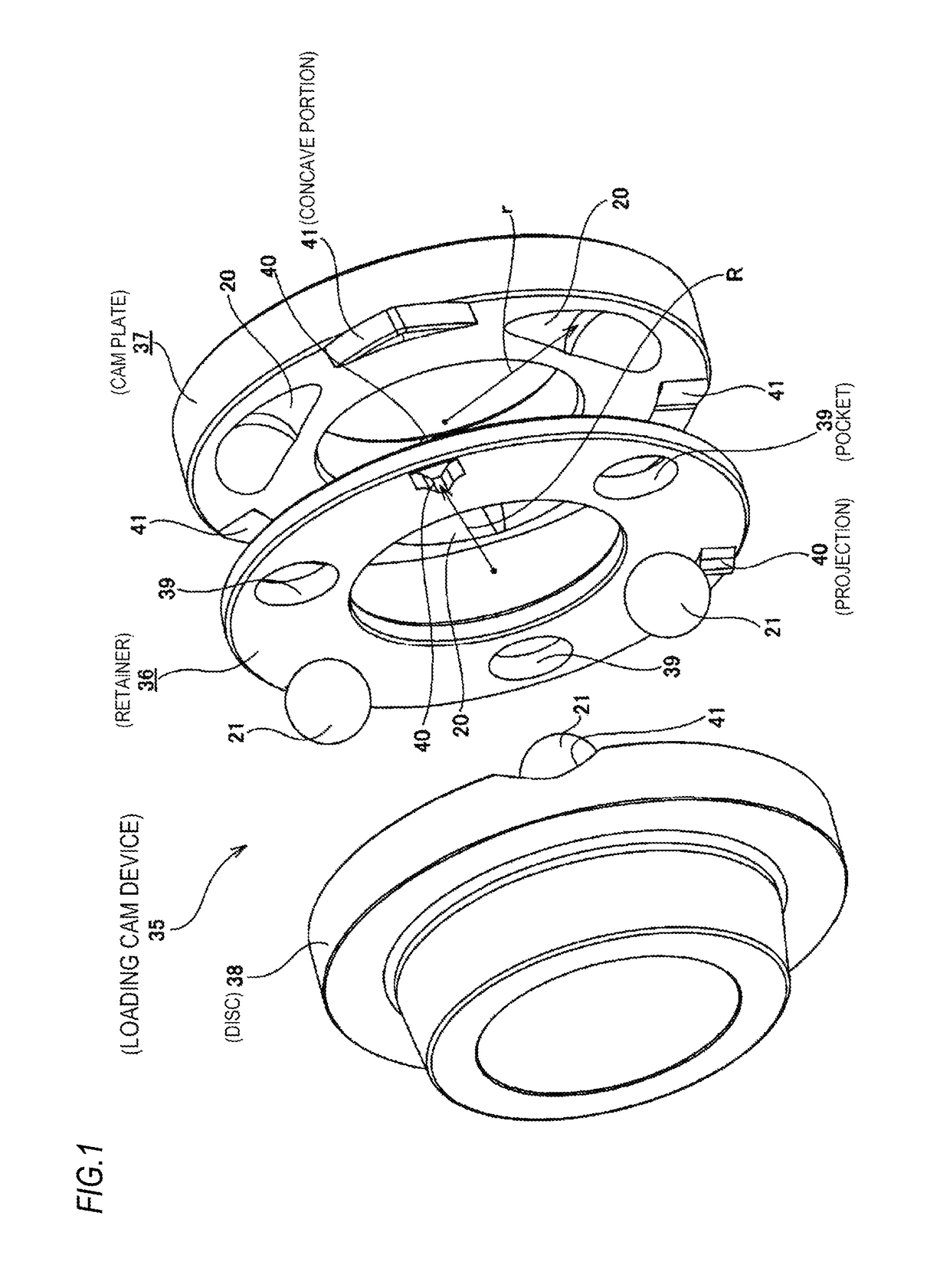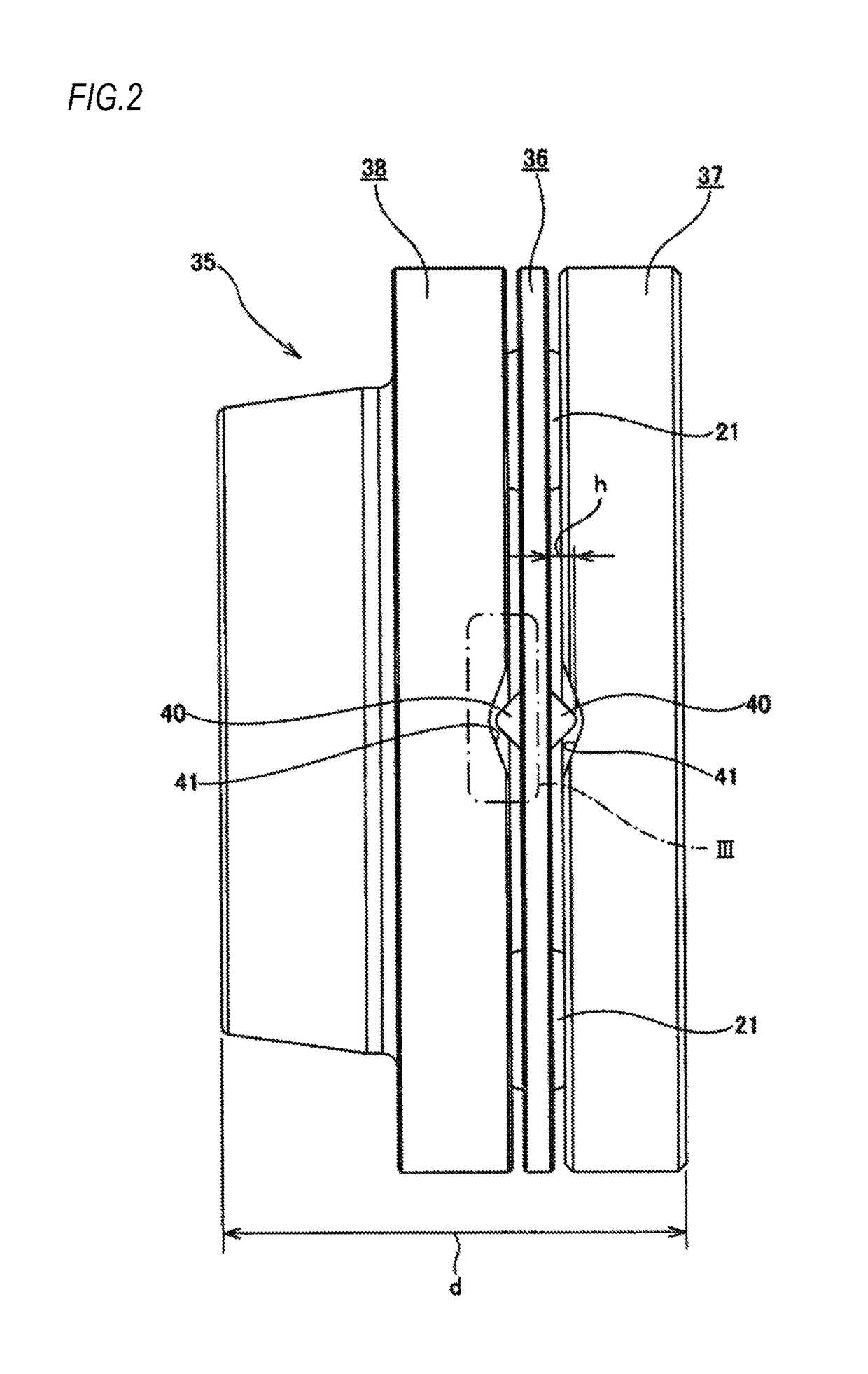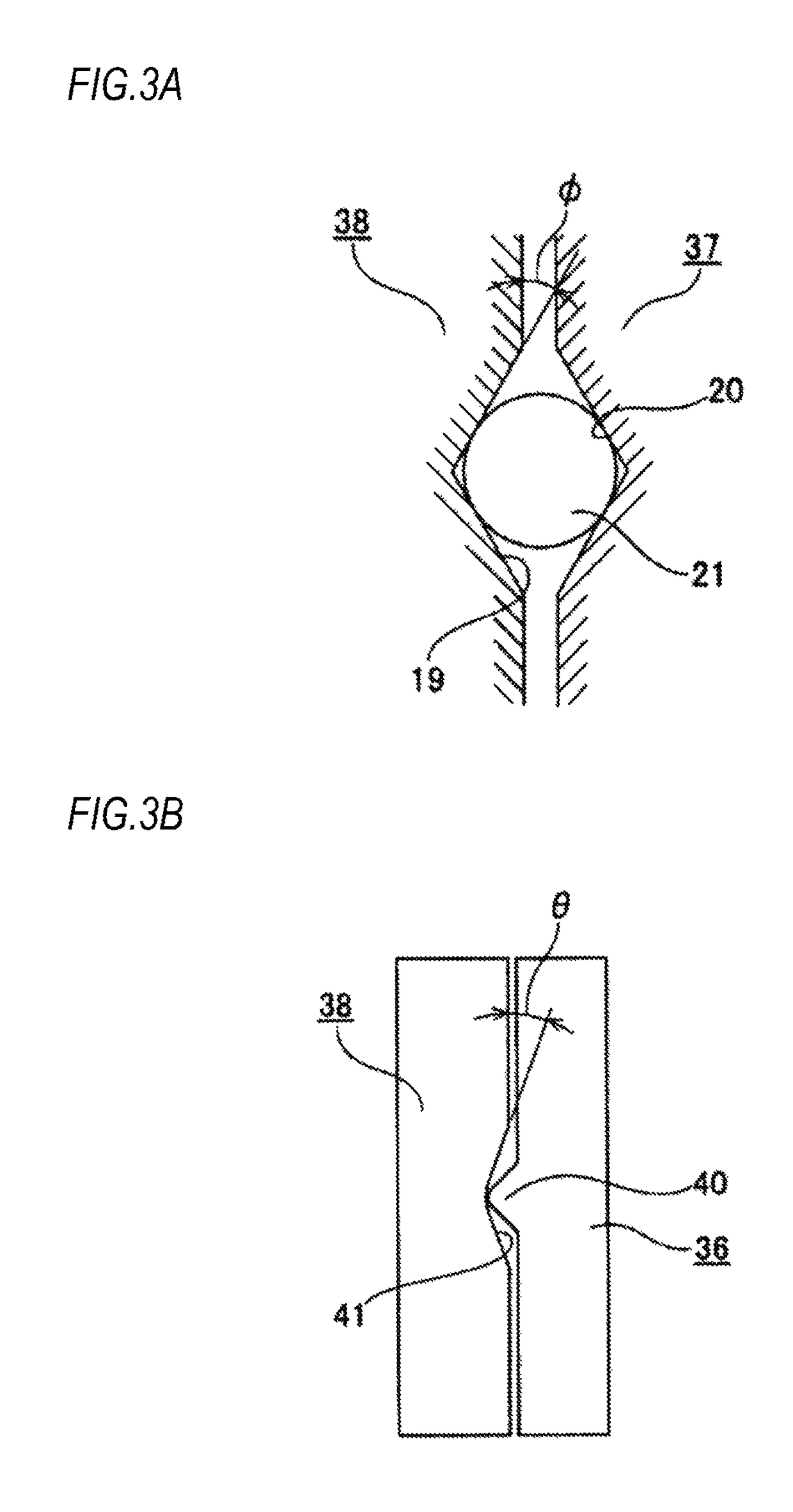Loading cam device and friction roller-type speed reducer
a technology of friction roller and cam device, which is applied in the direction of gearing, gearing details, hoisting equipment, etc., can solve the problems of excessive pressure on the surface of each traction part, difficulty in regulating the contact angle with high precision, and causing the following problems, so as to prevent the retainer from falling or axially rattling, and secure the strength and stiffness of the retainer. , the effect of preventing excessive stress
- Summary
- Abstract
- Description
- Claims
- Application Information
AI Technical Summary
Benefits of technology
Problems solved by technology
Method used
Image
Examples
Embodiment Construction
[0080]
[0081]FIGS. 1 to 3 show a loading cam device in a friction roller-type speed reducer according to a first aspect. A feature of this aspect is a structure capable of preventing a retainer 36 incorporated in a loading cam device 35 from coming down or axially rattling and securing strength and stiffness of the retainer 36 even when an axial thickness of the loading cam device 35 increases as the loading cam device 35 operates. The structures and operations of the other parts are similar to the loading cam device incorporated in the conventional friction roller-type speed reducer shown in FIGS. 13 to 18. For this reason, the illustration and description of the equivalent parts will be omitted or simplified, and the feature of the first aspect will be mainly described in the below.
[0082]In the first aspect, the loading cam device 35 includes a rotary shaft (not shown), a cam plate 37, a disc (moveable sun roller element) 38, a plurality of (three, in the shown example) balls 21, 2...
PUM
 Login to View More
Login to View More Abstract
Description
Claims
Application Information
 Login to View More
Login to View More - R&D
- Intellectual Property
- Life Sciences
- Materials
- Tech Scout
- Unparalleled Data Quality
- Higher Quality Content
- 60% Fewer Hallucinations
Browse by: Latest US Patents, China's latest patents, Technical Efficacy Thesaurus, Application Domain, Technology Topic, Popular Technical Reports.
© 2025 PatSnap. All rights reserved.Legal|Privacy policy|Modern Slavery Act Transparency Statement|Sitemap|About US| Contact US: help@patsnap.com



